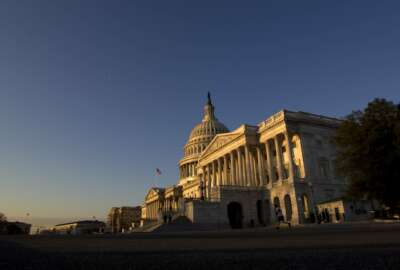
2019 make or break for FERS retirement benefits
Most of the House Republicans who repeatedly tried to cut costs in the massive FERS program are either gone from Congress or relegated by the 2016 midterm elect...
After nearly a decade of battering, 2019 could be the make-or-break year for the Federal Employee Retirement System. Although most current retirees are under the old Civil Service Retirement System, FERS covers 95 percent of feds currently on-the-job.
This year will be a repeat of previous legislative assaults on the federal benefits package but with one key difference: Democrats are running the House.
Most of the House Republicans who repeatedly tried to cut costs in the massive FERS program, which covers CIA agents, NASA scientists, letter carriers, foreign service officers and forest rangers, are either gone from Congress or relegated by the 2016 midterm elections to minority status. And the House committees that handle civil service matters and appropriations are now controlled by long-serving Democrats who represent sizable numbers of working and retired feds.
Republicans in the Senate, who gained seats as a result of the election, have either been indifferent to feds or helpful either in blocking proposals of the House and White House or actually pushing federal pay raises.
Changes in the FERS program are the number one goal of both friends and critics of the civil service benefits package. That includes semi-automatic longevity pay raises every one, two or three years, a 401K plan with a 5 percent government match, guaranteed paid vacations and sick leave that can be accumulated and applied toward retirement credit. After salaries and expenses, retirement represents the biggest cost to the government as an employer.
Proposals to change FERS include a soon-to-be revived White House and GOP House plan that would reduce future cost of living adjustments for the majority of current retirees and eliminate them for workers who retire in future. Under the CSRS program, annuitants get annual cost of living adjustments the same as people under Social Security. If inflation rises by 4 percent, for example, CSRS retirees and Social Security beneficiaries get a 4 percent COLA in January.
People under the FERS plan get so-called diet COLAs, meaning that if inflation hit 4 percent they would get a 3 percent COLA under current rules. If Congress OK’d the Republican budget plans of the past there would be no COLAs, ever, in the future for FERS retirees. Over time inflation would erode the value of their frozen pensions.
Another whack at pension benefits could come if GOP members reintroduce a plan to change the yardstick used to measure inflation for the purpose of setting COLAs. Currently COLAs for retired feds, military personnel and people getting Social Security are based on the Consumer Price Index-W. It measures costs of urban workers nationwide. In the past politicians, including year one of the Obama administration, endorsed something called the Chained CPI. It would produce lower COLAs each year that, opponents say, would be both unfair and actually reduce the buying power of retirees overtime.
With Democrats in control of the House, groups representing workers and retirees will push for enactment of the Fair COLA for Seniors Act. It’s been introduced by Rep. John Garamendi (D-Calif.). It if became law future COLAs for federal-military-Social Security retirees would be based on the CPI-E. It’s an index aimed at determining the actual rise in inflation for people ages 62 and older who typically have much higher medical costs. Using the CPI-E in place of the CPI-W would almost certainly mean much higher COLAs for retirees in the future.
The fact that Congress is divided and that the administration already has a lot on its plate means it is unlikely the federal benefits package will be under major assault this year. But whether it is or not the fact that the House and Senate are under different management is probably a good omen for both federal workers and retirees.
Nearly Useless Factoid
By Amelia Brust
The chocolate river in “Willy Wonka and the Chocolate Factory” was made from real chocolate, water and cream. As such it began to spoil and smell during filming.
Source: Good Housekeeping
Copyright © 2024 Federal News Network. All rights reserved. This website is not intended for users located within the European Economic Area.
Mike Causey is senior correspondent for Federal News Network and writes his daily Federal Report column on federal employees’ pay, benefits and retirement.
Follow @mcauseyWFED





